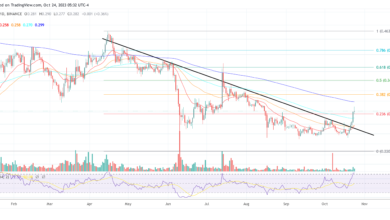When will Bitcoin exit its longest bear market?

- During the bear market, both retail and institutional investors increased their accumulation.
- Things can get bullish in the short term as a few indicators were in buyers’ favor.
After reaching an all-time high of over $67,00o in late November 2021, Bitcoin’s [BTC] price has remained under bears’ influence. In fact, this is the longest bear market in Bitcoin’s history, as it has lasted for more than 490 days.
Read Bitcoin’s [BTC] Price Prediction 2023-24
Though there were multiple reasons at play causing this, it should be noted that the bear market might not end anytime soon. It might require a trigger for BTC to exit the bear market and register massive growth.
A never-ending bear market for Bitcoin
Bitcoin goes through cycles. These cycles have a period of expansion, big correction, accumulation, and renewed expansion. However, not every cycle is the same length. Michaël van de Popp, founder and CEO of MN Trading, pointed this out in his recent tweet.
The longest bear market in history for #Bitcoin
It might feel like a ghost town in crypto. It might feel like there’s not even going to be a bull cycle anymore and I understand why these thoughts are there.
But why?
Well, people base their decisions on history. 👇… pic.twitter.com/Ljtv9wmw12
— Michaël van de Poppe (@CryptoMichNL) August 27, 2023
The present bear market is comparable to what was seen in 2015 in certain respects. A period of sideways action generally decreases interest in assets. This was evident from a look at Bitcoin’s on-chain data.
During the bear market, whale transaction counts have dropped, as has BTC’s transaction volume.

Source: Santiment
However, while its price remained low, Bitcoin adoption has been on the rise. For instance, BlackRock recently became the second-largest shareholder in the four top Bitcoin mining firms.
Not only that, but as reported earlier, MicroStrategies announced an additional purchase of 467 bitcoins, increasing the company’s assets under management to 152,800 units.
While BTC price action remained bearish, its supply on exchanges plummeted and its supply outside of exchanges increased. Moreover, the total number of BTC holders also went up consistently, reflecting increased accumulation.
This clearly indicated increased adoption of BTC not only by institutional investors but also retail investors.

Source: Santiment
However, if marginal price movements are not to be considered, investors might have to wait longer for BTC to reach new highs. Possibly, Bitcoin’s upcoming halving in 2024 could act as a trigger.
During the last halving in May 2020, the coin took a few months before initiating its bull rally. Therefore, if history is to be believed, BTC’s next bull rally might not be around the corner.
Is your portfolio green? Check out the BTC Profit Calculator
Anything in store in the short-term?
In the short term, though, BTC’s price can see a hike as a few market indicators were bullish. For example, both Bitcoin’s Relative Strength Index (RSI) and Money Flow Index (MFI) were in oversold zones, which could increase buying pressure.
Additionally, the MACD displayed the possibility of a bullish crossover, increasing the chances of a northbound price movement in the coming days. At the time of writing, BTC was trading at $25,957.73 with a market capitalization of over $505 billion.

Source: TradingView





